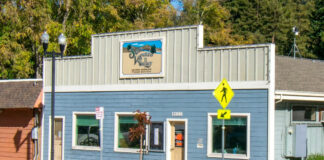
You know spring is coming when you see daffodils starting to open. You know spring is coming when plum trees begin their glorious show. And you know spring is coming when you begin to think of all those garden tasks that still need your attention.
February is one of those months that ease us into the gardening season. Didn’t get the roses pruned at the end of January? There’s still time. Didn’t dormant spray for fungal diseases and insect control? There’s still time. Didn’t plant any new berries yet for summer desserts? There’s still time — but don’t delay much longer.
What is important to do in the garden in February?
Prune fruit trees and smother overwintering eggs and insects by spraying with horticultural oil. Combine your spray with lime-sulfur (except on apricot trees) or copper soap to kill fungal disease spores, such as those that cause peach-leaf curl. Spinosad has also been shown to suppress fungal diseases. Do this when the buds swell, but before they open.
Prune your roses, if you haven’t already.
Prune repeat flowering roses by removing spindly or diseased shoots and deadwood. Do this before they start leafing out, which wastes plant energy.
Cut back the remaining stems by about a third, cutting canes at a 45-degree angle just above an outward-facing bud. You want to produce lots of roses, not just a few of exhibition size. Aim for a vase-shaped bush with an open center.
Don’t worry whether your pruning job is perfect. Roses are super forgiving, and you can trim them up again later.
Prune old garden roses that bloom once in the spring after flowering. Climbing roses require little pruning. Cut out extra stems if there are too many and also cut back long established canes to about the place where they are slightly thicker than a pencil. Then cut each side stem down to several inches. This will cause the cane to flower along its complete length for a beautiful spring display.
If any old leaves still cling to the plant, remove them. Rake up any debris beneath the plant to eliminate overwintering fungus spores. It’s a good idea to spray both the bare plant and the surrounding soil with a combination organic horticultural oil to smother overwintering insect eggs and a dormant spray, such as lime-sulfur or copper soap, to kill fungus spores.
If you usually have a problem only with black spot, you can use a mixture of 1 teaspoon baking soda with a few drops of light oil in 1 quart water and spraying every seven to 10 days. Thoroughly coat the trunk, branches and twigs.
Cut back woody shrubs to stimulate lush new growth on plants such as Mexican bush sage and artemisia to within a few inches of the ground. Don’t use this approach on lavender or ceanothus, though. Lightly prune them after blooming, and don’t cut back to bare wood inside the plant. Prune fuchsias back by a third and remove dead, crossing branches and interior twiggy growth. Container fuchsias can be cut back to the pot rim.
Cut back hydrangea stems that bloomed last year if you haven’t already done so, and apply a soil acidifier if you want the flowers blue. Although sulfur is the traditional favorite for quickly acidifying soil, it is not kind to many beneficial soil microorganisms. Coffee grounds, pine needles, peat moss and cottonseed meal are kinder to your soil.
Don’t cut back grasses yet if you get frost in the area where they grow. Wait until mid-March.
Don’t prune spring-flowering shrubs or trees such as lilacs, flowering cherries, plums and crabapples, rhododendrons, azaleas, camellias, weigela or spirea until after they flower. You can cut some branches during flowering to take in cuttings for bouquets.
Wait to prune back perennials that might have their new foliage damaged in a late frost. Same goes for shrubs that got hit by those January frosts. That damaged foliage can protect the plant from further frost damage. Mid-March is the estimated date of the last hard frost in our area.
Happy Valentine’s Day to all you gardeners out there.
– Jan Nelson, a landscape designer and California certified nursery professional, will answer questions about gardening in the Santa Cruz Mountains. Email her at ja******@*ol.com, or visit www.jannelsonlandscapedesign.com to view past columns and pictures.












